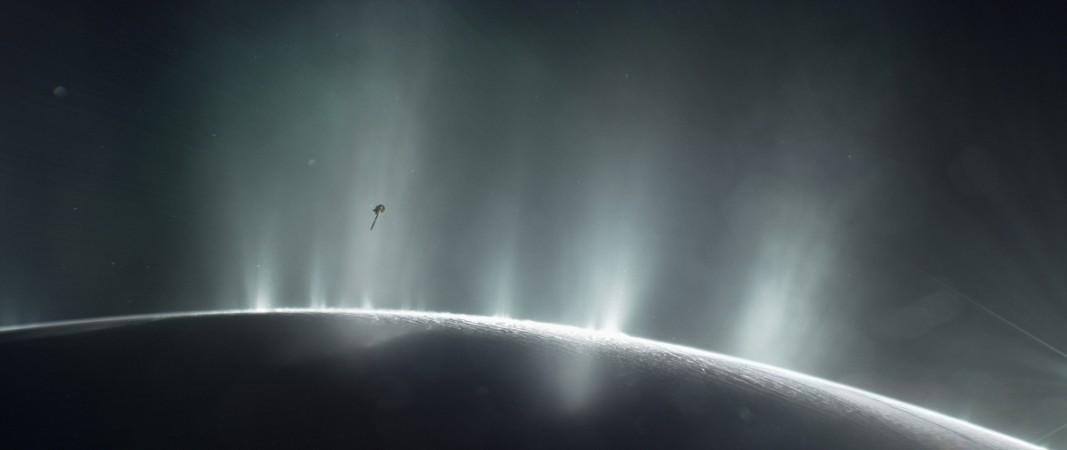
NASA's Cassini spacecraft crashed into Saturn and burned up last year, but it left behind a massive cache of data that is throwing up chances for discoveries on a regular basis. The most recent one is the discovery of complex organic molecules on one of Saturn's moons- Enceladus. With this discovery, astronomers have pointed out that the moon has met "critical requirements for life".
The discovery was made after careful analysis of the mass spectrometry data from Cassini which was used to study the ice that gets ejected from Enceladus. Of Saturn's many moons, Enceladus is one of the more interesting ones. It resembles a massive ball of ice that scientists believe to hold a liquid ocean inside. However, there are cracks on the surface of the moon that regularly spouts out crystals of ice which in turns feeds into Saturn's rings. It is rather spectacular to look at.
The presence of liquid water under the surface has led many astrobiologists as well as NASA to speculate if there is any life in there and now, the answer to that question is inching ever so closer to "yes". Scientists from the Southwest Research Institute (SwRI) say that chemical reactions between Enceladus' rock core and warm water from its subsurface oceans could be directly linked to the complex molecules found, in a press release.
"We are, yet again, blown away by Enceladus. Previously we'd only identified the simplest organic molecules containing a few carbon atoms, but even that was very intriguing," said SwRI's Dr. Christopher Glein. He is the co-author of a paper published in the journal Nature that explains this discovery.
Glien went on to explain that the complex organic molecules found were over 200 atomic mass units, which is about 10 times heavier than Methane. "With complex organic molecules emanating from its liquid water ocean, this moon is the only body besides Earth known to simultaneously satisfy all of the basic requirements for life as we know it." This includes Mars.
Before Cassini swan dove into Saturn in September last year, it was able to sample the plume of material that came from the subsurface of Enceladus, says a release by the SwRI. This sample was thoroughly analysed by the Cosmic Dust Analyzer (CDA) and the Ion and Neutral Mass Spectrometer (INMS). Measurements were made with ice both from the plume and Saturn's E-ring, which is formed by ice grains escaping Enceladus' gravity and feeding into the ring.
Cassini had a close flyby of Enceladus in 2015 where INMS detected molecular hydrogen when it flew right through the plume. Scientists say that molecular hydrogen could have been formed by the geochemical interaction between water and rocks in hydrothermal environments.
"Hydrogen provides a source of chemical energy supporting microbes that live in the Earth's oceans near hydrothermal vents," said SwRI researcher Hunter Waite, co-author of the new paper.
"Once you have identified a potential food source for microbes, the next question to ask is 'what is the nature of the complex organics in the ocean?' This paper represents the first step in that understanding—complexity in the organic chemistry beyond our expectations!"
Future explorations could possibly fly out to Enceladus, go under the plume and collect as much samples as needed and actually fly back to Earth carrying the samples, a mission like this is not too far fetched. We must, however, be cautious, says Waite, because "this finding indicates that the biological synthesis of organic molecules on Enceladus is possible."









